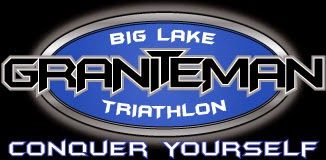According to Wikipedia, VO2 Max (also maximal oxygen consumption, maximal oxygen uptake or aerobic capacity) is the maximum capacity of an individuals body to transport and utilize oxygen during incremental exercise. The name is derived from V – volume per time, O2 – oxygen, max – maximum.
VO2 max is expressed either as an absolute rate in litres of oxygen per minute (l/min) or as a relative rate in millilitres of oxygen per kilogram of body weight per minute (ml/kg/min), the latter expression is often used to compare the performance of endurance sports athletes.
Measuring an accurate VO2 max requires an all-out effort (usually on a treadmill or bicycle) performed under a strict protocol in a sports performance lab. These protocols involve specific increases in the speed and intensity of the exercise and collection and measurement of the volume and oxygen concentration of inhaled and exhaled air. This determines how much oxygen the athlete is using.
An athlete’s oxygen consumption rises in a linear relationship with exercise intensity — up to a point. There is a specific point at which oxygen consumption plateaus even if the exercise intensity increases. This plateau marks the V02 Max. It’s a painful point in VO2 max testing where the athlete moves from aerobic metabolism to anaerobic metabolism. From here, it’s not long before muscle fatigue forces the athlete to stop exercising. The test usually takes between 10 and 15 minutes and requires an athlete to be completely rested and motivated to endure the pain long enough to find the true VO2 max.
VO2 max results vary greatly. The average for a sedentary individual is close to 35 ml/kg/min. Elite endurance athletes often average 70 ml/kg/min. One of the highest ever recorded, was cross-country skier Bjørn Dæhlie measured at an astounding 96 ml/kg/min. Cyclist Lance Armstrong’s VO2 max was reported at 85 ml/kg/min.
To put this into perspective, thoroughbred horses have a VO2 max of around 180 ml/kg/min. Siberian dogs running in the Iditarod Trail Sled Dog Race have VO2 values as high as 240 ml/kg/min.
I had my first test performed in February 2008 at Tri Fitness in White Bear Lake, MN. If you’re ever in the neighborhood I strongly suggest stopping in and checking them out. A great little store, with everything tri, and good people to boot! In addition to finding out your VO2 Max, the test will inform you about your metabolic heart rate training zones, which was my primary motivation.
There are some very simple formulas (like 220 minus your age) for determining your max heart rate. Your maximal heart rate is the anchor point for determining your five training zones, which are simply percentages of your maximum. But simple in this case is not better (in my humble opinion). Heart rate training is the basis for my Ironman training plan.
The test, in addition to producing your VO2 max results will determine your metabolic heart rate zones, including your AT (Anaerobic Threshold). In an attempt to oversimplify, your muscles can “burn” glucose (fuel) two ways, aerobically (“with oxygen”) and anaerobically (“without oxygen”). Your AT is the point where your body switches between aerobic fuel burning to anaerobic fuel burning.
When your body is working aerobically, your primary fuel source is fat. Even the leanest of athletes have an abundance of fat that can be used for fuel. For the endurance athlete this is a primary key to improving performance in ultra endurance events like Ironman. By raising your AT you increase the range of your aerobic zone. The greater the aerobic zone the longer and harder the athlete can work.
Tomorrow I’m having my VO2 rechecked, as I move into the final 12-weeks of my Ironman training, my purpose is primarily to reestablish my heart rate zones. This final 12-week phase has a focus on AT threshold interval training. This training is designed specifically to raise my AT in preparation for my race in Madison. Rechecking my AT at this time will ensure that my training is on target and will help train my heart to perform at its optimal level come September.


